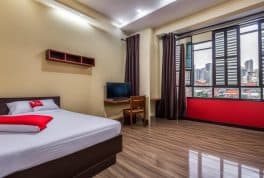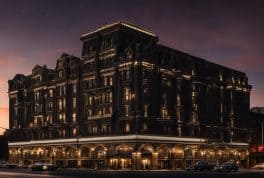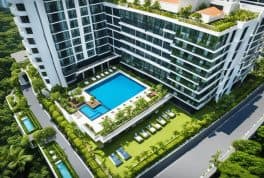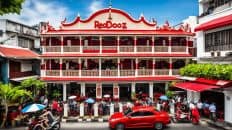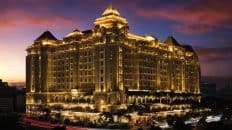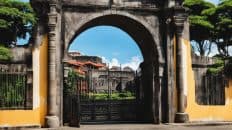Manila City
Manila, the vibrant capital of the Philippines, is a fascinating blend of historical richness and modern dynamism. Famous for its colonial landmarks like Intramuros and Manila Cathedral, the city buzzes with lively markets, diverse neighborhoods, and a rich culinary scene. It’s a place where the past and present coexist, offering a unique experience steeped in culture and the renowned Filipino hospitality.
Top 10 Questions and Answers about Manila.
What is Manila known for?
What is the history of Manila?
What are some popular tourist attractions in Manila?
What is the climate like in Manila?
What is the significance of Manila Bay?
How is the transportation system in Manila?
What is the cultural scene like in Manila?
What are some local dishes to try in Manila?
What is the economic role of Manila in the Philippines?
What languages are spoken in Manila?
Guides and Tours
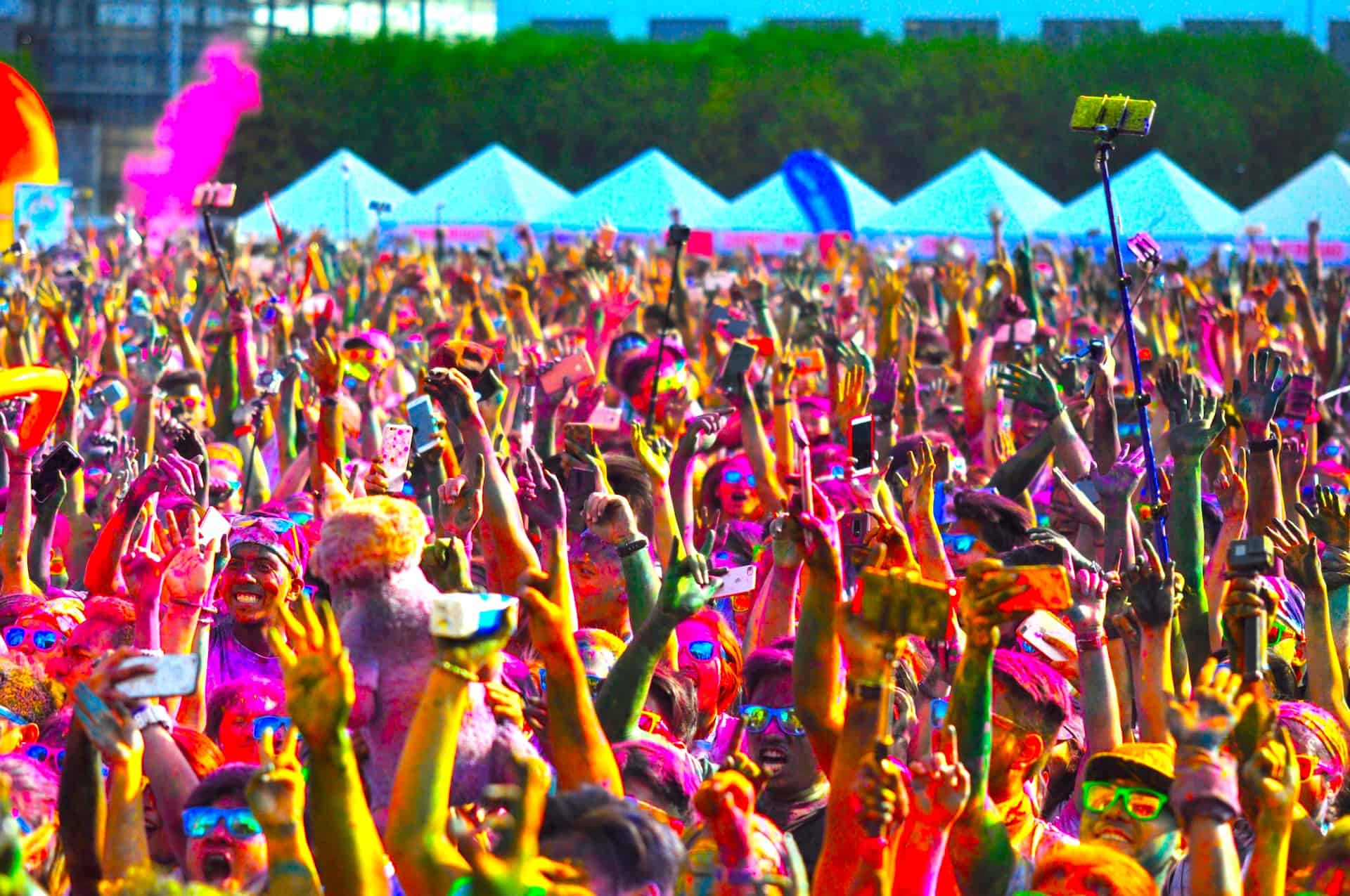
Top 10 Attractions to see in Manila
- Intramuros: Known as the "Walled City," Intramuros is the oldest district and historic core of Manila. Visitors can explore Fort Santiago, San Agustin Church, and other well-preserved buildings from the Spanish colonial period.
- Rizal Park (Luneta): One of the largest urban parks in Asia, Rizal Park is named after Dr. Jose Rizal, the Philippines' national hero. It's a great place for leisure activities and hosts the Rizal Monument.
- Manila Cathedral: This is a stunning architectural landmark and an important religious site. The cathedral has been rebuilt several times over the centuries and stands as a symbol of resilience.
- San Agustin Church and Museum: A UNESCO World Heritage site, this church is the oldest stone church in the Philippines. The attached museum displays religious artifacts and art.
- National Museum of the Philippines: This museum complex includes the National Art Gallery, the Museum of the Filipino People, and the Planetarium. It's a must-visit for those interested in the art, culture, and history of the Philippines.
- Manila Ocean Park: An oceanarium boasting a wide variety of aquatic species, this park is a great destination for families and marine life enthusiasts.
- Binondo, Manila's Chinatown: Known as the oldest Chinatown in the world, Binondo offers a unique cultural experience with its blend of Filipino and Chinese cultures, especially evident in its cuisine.
- Cultural Center of the Philippines (CCP): An important venue for the performing arts, the CCP hosts a range of events from concerts and theater to ballet and exhibitions.
- Divisoria Market: Known for its wide array of affordable goods, Divisoria is a bustling market and a haven for bargain shoppers.
- Ayala Museum: Located in Makati, close to Manila, this museum offers a modern look at Filipino culture, art, and history, with impressive dioramas and art collections.
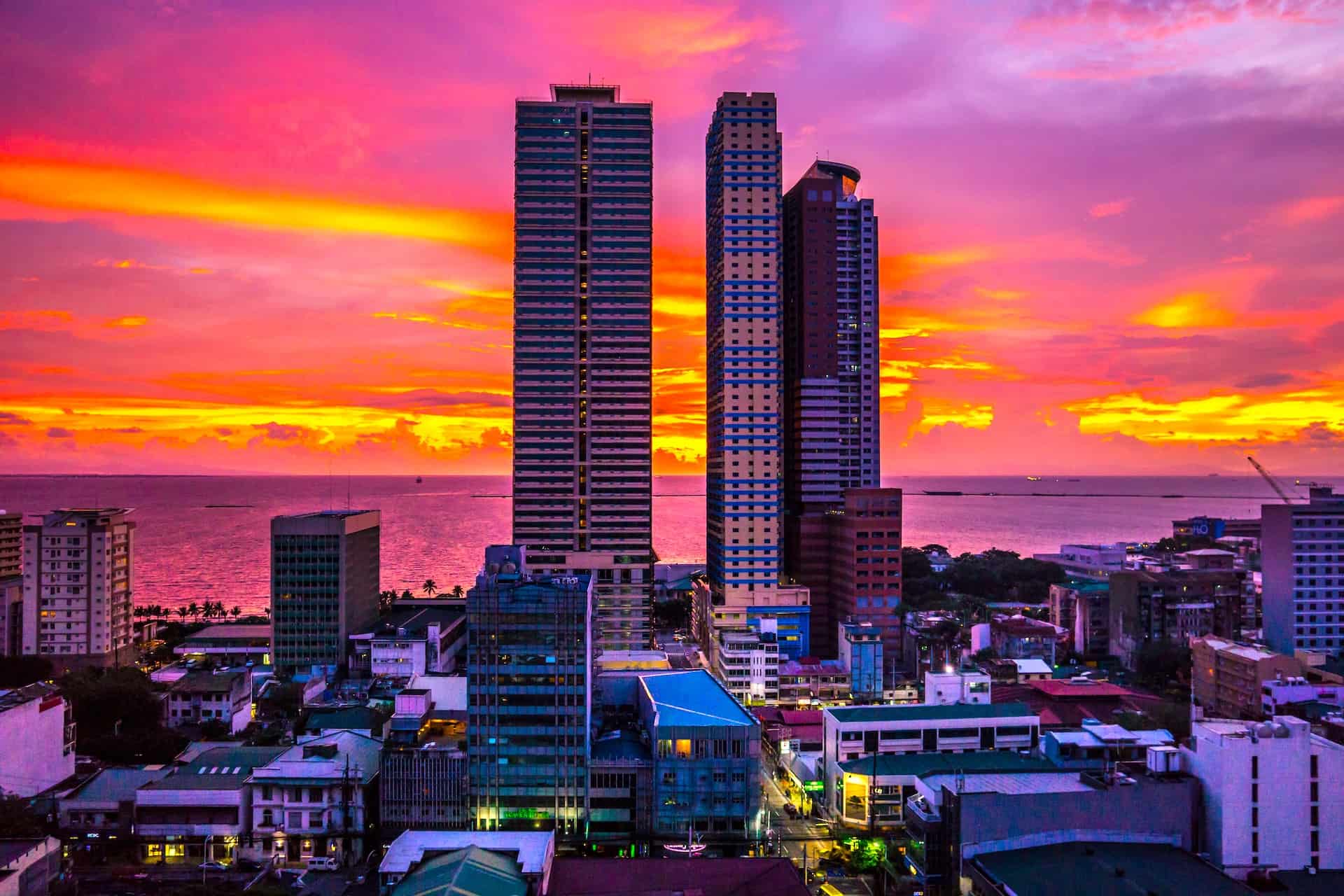
1. Introduction to Manila
Manila, the bustling capital city of the Philippines, is a melting pot of history, culture, and modern urban development. Situated on the island of Luzon, Manila serves not only as the political heart but also as the cultural and economic hub of this Southeast Asian nation. The city's unique character is a reflection of its complex history, shaped by native traditions, Spanish colonial influence, and modern global trends. This article aims to delve deep into the essence of Manila, exploring its history, culture, geography, and its pivotal role as the capital of the Philippines.
A. Geographical Setting
Manila is strategically positioned on the eastern shore of Manila Bay. The bay, known for its stunning sunsets and historical significance, has played a crucial role in the city's history. From the Spanish galleons to American warships, Manila Bay has witnessed the ebb and flow of various powers vying for control over the city. The city sprawls towards the western coast of Luzon, facing the South China Sea, making it an important gateway to the Philippines. The city's geography has been a key factor in its development as a chief port and a hub of commerce and trade.
The city's location in the tropical region of Southeast Asia means that it experiences a tropical climate, characterized by a distinct wet season. The wet season in Manila usually brings heavy rains and occasional typhoons, posing challenges for the city's infrastructure and residents. Despite these challenges, Manila's position has allowed it to grow into a significant metropolitan area, influencing not just the Philippines but the entire Southeast Asian region.
B. Historical Overview
Manila's history is as colorful as its vibrant streets and diverse population. Before the arrival of European explorers, the area was inhabited by various Malay tribes, whose cultural and political structures influenced the early development of the city. These Malay influences are still evident in some aspects of Manila's culture and traditions. The first recorded name of the city was "Maynilad," reflecting the abundance of nilad, a flowering mangrove plant that was prevalent along the southern shores of the Pasig River and Manila Bay.
The arrival of the Spanish in the 16th century marked a significant turning point in Manila's history. Manila became the capital of the Spanish East Indies, ushering in over three centuries of Spanish rule. This period left an indelible mark on the city's cultural and architectural landscape. Intramuros, the oldest district of Manila, is a living testament to the city's Spanish colonial past. The walled city houses ancient churches, government buildings, and cobblestone streets, reminiscent of a bygone era.
World War II was another pivotal chapter in Manila's history. The city suffered significant damage during the Battle of Manila, one of the most devastating urban battles of the Pacific theater. The war's impact on Manila was profound, with large parts of the city destroyed and thousands of civilians losing their lives. The post-war period saw the reconstruction of Manila, leading to the emergence of modern buildings and infrastructure that have shaped the city's current skyline.
C. Manila as the Capital City
As the capital of the Philippines, Manila holds a special place in the country's political and administrative framework. The city is part of the National Capital Region (NCR), an administrative region that includes several other cities and municipalities. This region serves as the center of government, with key institutions and offices, including the iconic City Hall, located in Manila. The City Hall is not just an administrative building but a symbol of the city's resilience and enduring spirit.
The city government of Manila plays a crucial role in managing the complex dynamics of this sprawling metropolis. Over the years, various mayors have led the city through periods of change and development. The current city administration, under the leadership of the mayor and vice mayor, continues to address the challenges of urbanization, seeking to balance growth with sustainability.
The role of Manila as the capital extends beyond administration. It is the heart of the Philippines in terms of culture, education, and commerce. The city's rich history and vibrant contemporary culture attract millions of tourists each year, making tourism a vital part of its economy. Manila's status as a capital city is also reflected in its diverse population, composed of people from all corners of the Philippines and the world, making it a true melting pot of cultures.
D. Manila's Geographical and Cultural Significance
Manila's geographical location on Luzon, the largest and most populous island in the Philippines, has contributed to its prominence as a major city. Luzon acts as the country's political, economic, and cultural nucleus, with Manila at its core. The city's position along major sea and air routes has facilitated its growth as a regional hub for commerce, finance, and transportation.
Culturally, Manila is a city of contrasts. It's a place where centuries-old churches stand alongside modern buildings, where traditional festivals are celebrated with the same fervor as contemporary cultural events. This blend of the old and new is a testament to the city's ability to adapt and evolve while preserving its rich heritage.
Manila's influence extends to the southern, northern, and southeastern regions of the Philippines, serving as a model for urban development and cultural preservation. The city's metropolitan area is a tapestry of diverse districts, each with its unique character and history. From the historic streets of Intramuros to the bustling business districts of Makati and Ortigas, Manila offers a glimpse into the multifaceted nature of urban Filipino life.
E. Conclusion
In conclusion, Manila is not just the capital of the Philippines; it is a symbol of the country's resilience, diversity, and rich cultural tapestry. From its strategic position on the eastern shore of Luzon, facing the vast expanse of Manila Bay, to its role as a chief port and metropolitan hub, Manila encapsulates the spirit of the Philippines. Its history, marked by Malay influences, Spanish colonization, and the scars of World War II, tells a story of survival and rebirth. As we explore Manila's streets, buildings, and people, we come to understand the essence of this remarkable city – a city that stands as a beacon of the Filipino spirit, bridging its past with a hopeful and vibrant future.
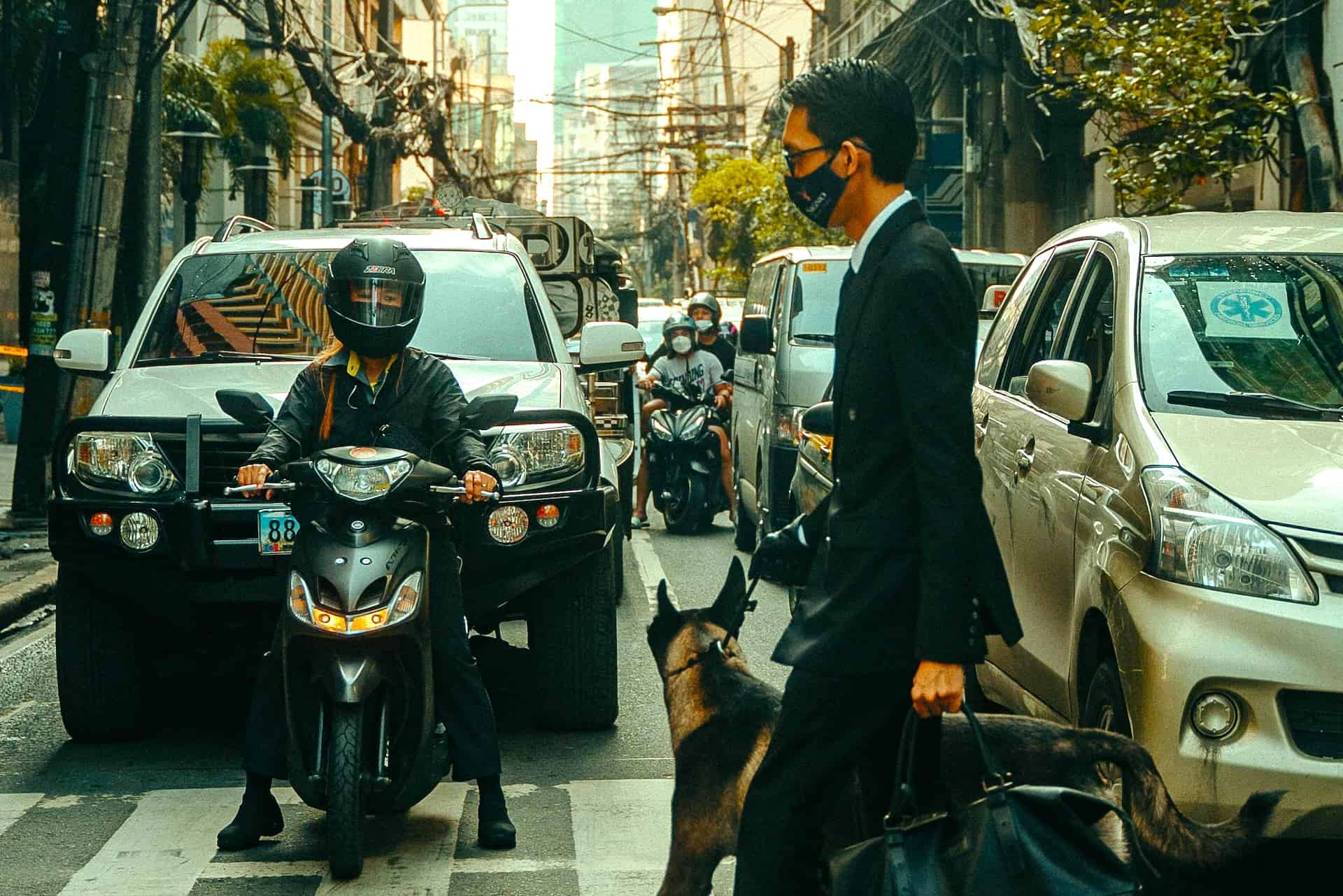
2. Historical Background of Manila
The history of Manila, a city now known for its vibrant blend of cultures and bustling metropolitan area, is a rich tapestry that tells the story of the Philippines itself. From its early beginnings influenced by Malay culture to the scars left by World War II, Manila's history is a compelling chronicle of resilience and transformation.
A. Pre-Colonial Era and Malay Influences
Long before the Spanish set foot on its shores, Manila was already a thriving settlement. The early history of the city is deeply rooted in Malay influences, which shaped its political, social, and cultural landscape. These influences were evident in the barangay system, a form of governance used by early Filipino settlements, which was prevalent in the area that would eventually become Manila. The city's original name, "Maynilad," is derived from the abundance of a mangrove species, known as 'nilad,' that grew along the banks of the Pasig River and the shores of Manila Bay.
The strategic location of Manila along the eastern shore of Luzon made it an ideal trading hub. The city was a melting pot where traders from various parts of Southeast Asia converged. The Pasig River served as a vital artery, connecting Manila Bay to the interior of Luzon, facilitating trade and commerce.
B. Spanish Colonization and Its Impact
The arrival of Spanish explorers in the 16th century marked a turning point in Manila's history. Spain's conquest of Manila in 1571 transformed the city into a key outpost of the Spanish Empire in Asia. The Spanish colonial period, which lasted more than three centuries, left a lasting impact on the city's architecture, culture, and religion.
Manila became the capital of the Spanish East Indies, and the city's urban landscape began to change dramatically. Intramuros, the walled city, was established as the seat of the Spanish government. Within these walls, churches, government buildings, and educational institutions were built, showcasing the architectural style of Spanish colonialism. The Manila Cathedral and San Agustin Church are notable examples that still stand today.
The Spanish colonial era also saw the introduction of Christianity, which played a significant role in shaping the cultural and religious identity of Manila. The city became the center of Catholicism in the region, with the establishment of several churches and religious orders.
C. American Period and the Impact of World War II
The Spanish-American War in 1898 ended Spain's rule in the Philippines, and Manila came under American control. This period saw further urban development and modernization. The Americans introduced a new educational system, built modern infrastructure, and established a different form of governance.
However, World War II brought unprecedented destruction to Manila. The city was one of the most devastated in the Pacific, suffering significant damage during the Battle of Manila in 1945. The battle, which was part of the larger campaign to liberate the Philippines from Japanese occupation, left large parts of the western coast of the city in ruins. The once majestic walled city of Intramuros was almost completely destroyed, and thousands of civilians lost their lives. The post-war period was a time of rebuilding and recovery, with efforts focused on restoring the city's infrastructure and heritage sites.
D. Post-War Recovery and the Emergence of Modern Manila
The end of World War II marked the beginning of a new era for Manila. The city embarked on a journey of reconstruction, rebuilding much of its infrastructure that was lost during the war. This period saw the rise of modern buildings, reshaping the city's skyline. The city expanded beyond its original boundaries, with new districts and suburbs emerging to accommodate its growing population.
The post-war period also witnessed significant economic growth. Manila evolved into a bustling commercial and industrial center, attracting investments and businesses from around the world. The city's port facilities were expanded, reaffirming its status as a chief port and a major gateway to the Philippines.
The cultural landscape of Manila also underwent significant changes. The city emerged as a melting pot of various influences, with a vibrant arts and entertainment scene. Manila's cinemas, theaters, and galleries became centers of cultural expression, showcasing the talents of Filipino artists and performers.
E. Conclusion
Manila's history is a reflection of the resilience and adaptability of its people. From its early days influenced by Malay culture to the impact of Spanish colonization and the devastation of World War II, the city has continually reinvented itself. Today, Manila stands as a testament to the enduring spirit of the Filipino people, a city that has withstood the tests of time and emerged stronger and more vibrant.
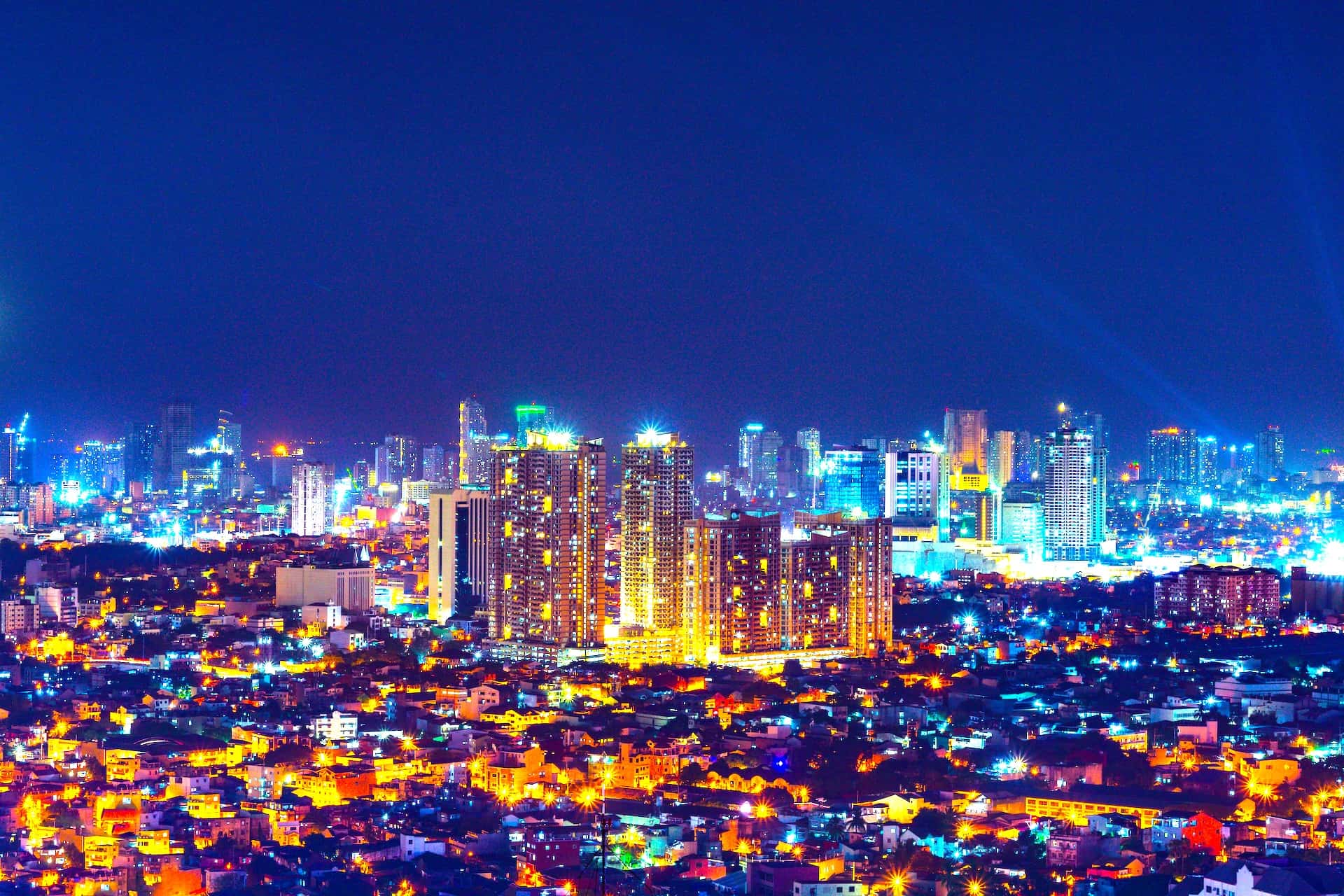
3. Geography and Climate of Manila
The geography and climate of Manila play a critical role in shaping the life and development of this dynamic city. Nestled on the eastern shore of Luzon, the largest and most populous island in the Philippines, Manila enjoys a strategic location that has historically influenced its growth as a chief port and a cultural melting pot. This section explores the geographical nuances and climatic conditions of Manila, offering insights into how these factors have impacted the city's evolution.
A. Manila’s Strategic Location
Manila’s geographical position on the eastern and southern shore of Luzon has been a key driver in its historical and economic development. The city sits on the south and western coast of the island, facing the vast South China Sea, which has positioned it as a gateway to the Philippines. This strategic location has historically made Manila a focal point for trade and commerce, not only within the country of the Philippines but in the larger Southeast Asian region.
The city’s proximity to the water has defined its identity. Manila Bay, a natural harbor that has been instrumental in the city’s history, provides a safe anchorage for ships and has been the site of several key historical events. This bay has played a pivotal role in shaping Manila’s destiny, from the Spanish colonization to the battles of World War II. The bay’s importance is further underscored by the presence of the Manila North Harbor, the city’s primary maritime gateway, facilitating both domestic and international trade.
B. Topography and Urban Spread
Manila’s topography is relatively flat, which has allowed the city to expand rapidly in all directions. The Pasig River runs through the city, bisecting it and providing a natural delineation between the north and south. This river has been an essential part of Manila's history, serving as a lifeline for transportation and commerce in the city's early days.
The city’s urban sprawl extends beyond its original boundaries, encompassing several municipalities and cities that make up the National Capital Region (NCR). This metropolitan area reflects the diverse and rapidly evolving landscape of Manila, showcasing a mix of historical areas, government buildings, modern buildings, residential districts, and commercial hubs. The growth of Manila’s metropolitan area is a testament to its status as one of the leading cities in Southeast Asia.
C. Climate and Environmental Challenges
Manila experiences a tropical climate, characterized by a pronounced wet season. The wet season in southern part typically lasts from June to November and is marked by heavy rainfall, which can lead to flooding in many parts south of the city. The city’s geography, with its proximity to the bay and the river, makes the south of it particularly susceptible to these environmental challenges.
The city government of Manila has undertaken various initiatives to address the challenges posed by the wet season. These include improving drainage systems, implementing flood control measures, and promoting environmental awareness among citizens. Despite these efforts, the wet season remains a significant concern for the city, affecting everything from daily life to long-term urban planning.
D. Manila’s Role as a Chief Port
Manila’s role as a chief port is intrinsically linked to its geography. The port of Manila, which includes the Manila North Harbor, the Port Area, and other smaller harbors, is the largest and busiest in the Philippines. It handles the majority of the country's sea-borne trade and commerce, playing a critical role in the national economy.
The port's efficiency and capacity have been continuously improved to accommodate the growing demands of trade and commerce. These improvements have not only bolstered Manila's status as a chief port but have also attracted international businesses and investments, contributing to the city’s economic growth.
E. Conclusion
The geography and climate of Manila are fundamental aspects that have shaped the city's identity and development. Its strategic location on the eastern shore of Luzon, facing Manila Bay, has established it as a vital link in regional and international trade networks. The city's topography and urban expansion reflect its dynamic growth and adaptability.
However, the challenges posed by the wet season and environmental concerns remain critical issues that the city continues to address. The city government, along with its citizens, is engaged in ongoing efforts to mitigate these challenges and promote sustainable development.
Manila's status as a chief port underscores its importance not just in the Philippines but in the broader Southeast Asian context. The city's geography and climate, coupled with its rich history and vibrant culture, make Manila a unique and fascinating urban landscape, continually evolving and adapting to the challenges and opportunities of the 21st century.
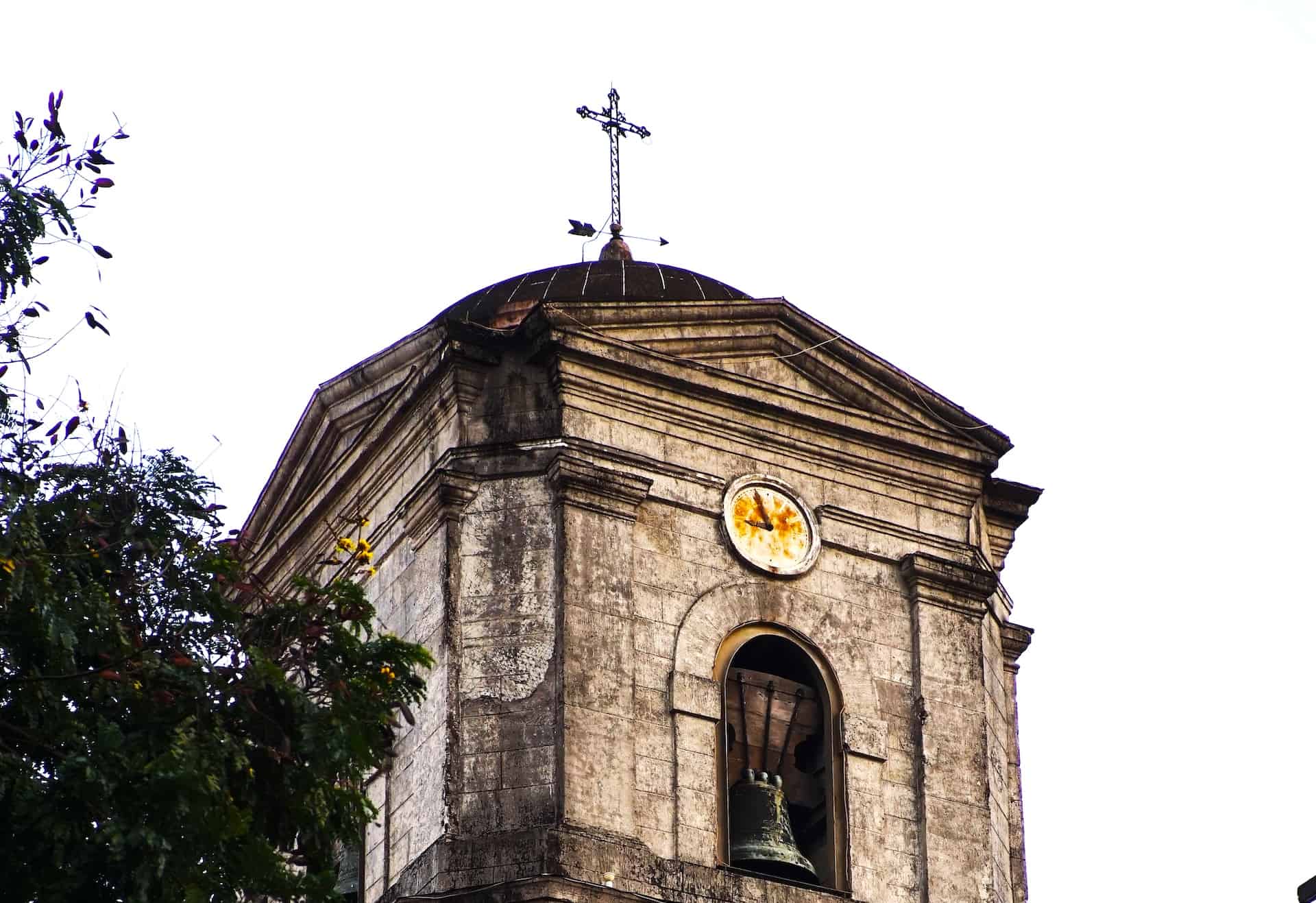
4. Government and Administration of Manila
Manila, as the capital city of the Philippines, plays a pivotal role in the country's governance and administration. The city's political and administrative structures are as complex as its history and culture. This section delves into the intricacies of Manila's government, exploring its place within the National Capital Region, the role and structure of the city government, and the significance of key government buildings.
A. Manila within the National Capital Region
Manila is the centerpiece of the National Capital Region (NCR), an area that encompasses 16 cities and one municipality. The NCR is not just the political and administrative heart of the Philippines, but also its cultural and economic center. Within this region, Manila stands out not only as the capital city but also as a symbol of the nation's history and identity.
The NCR's unique administrative status means it is governed differently from the provinces and other regions in the Philippines. It does not have a provincial government, and instead, its cities and municipality are directly governed by their respective local government units. This structure reflects the importance and complexity of managing such a densely populated and economically vital area.
B. The City Government of Manila
The governance of Manila is a testament to the city’s dynamic and evolving nature. The city government is headed by the Mayor, who plays a crucial role in shaping the city's policies and development strategies. The Mayor is supported by the Vice Mayor and the city council, which consists of elected councilors representing the city's various districts.
The city government is responsible for a wide range of functions, including urban planning, infrastructure development, social services, environmental management, and maintaining law and order. Over the years, different mayors have brought their unique vision and leadership style to the role, contributing to Manila’s growth and development.
One of the critical responsibilities of the city government is managing the challenges posed by rapid urbanization. This includes addressing issues like traffic congestion, housing, public health, and environmental sustainability. The city government also plays a pivotal role in disaster management, especially during the wet season when the city is prone to flooding.
C. Key Government Buildings and Infrastructure
Manila is home to several significant government buildings that are not just administrative centers but also symbols of the city's rich history and heritage. The Manila City Hall is one of the most iconic structures in the city. It houses the offices of the Mayor and the city council and is known for its distinctive clock tower, a prominent feature of the Manila skyline.
Another notable government building is the Malacañang Palace, the official residence and office of the President of the Philippines. Located along the Pasig River, the palace is a historic building that has been a witness to many pivotal moments in the country’s history.
In addition to these, there are several other government offices and institutions spread across the city, each playing a vital role in the administration of Manila and the country.
D. The Role of the Mayor and City Council
The Mayor of Manila is the city’s chief executive, responsible for the overall management and governance of the city. The Mayor’s duties include implementing city ordinances, overseeing the city's various departments, and managing the city's budget and resources. The Mayor also represents the city in national and international forums, playing a crucial role in positioning Manila on the global stage.
The Vice Mayor, while primarily acting as the presiding officer of the city council, also plays a significant role in the city's governance, particularly in the absence of the Mayor. The city council, on the other hand, is the legislative body responsible for enacting city ordinances, approving budgets, and overseeing the general welfare of the city's residents.
The collaboration between the Mayor, Vice Mayor, and the city council is essential for the effective governance of Manila. Their decisions and policies directly impact the lives of millions of residents and shape the future of this historic city.
E. Conclusion
The government and administration of Manila are integral to understanding the city's dynamics. As the capital city, Manila's governance model sets the tone for administrative practices across the Philippines. The city’s position within the National Capital Region, the structure and role of the city government, and the significance of key government buildings and infrastructure, all play a vital part in the city's functioning.
The governance of Manila is a balancing act of preserving its rich heritage while driving forward its modernization and development. The city’s leaders, past and present, have navigated these challenges, steering Manila through various phases of growth and transformation.
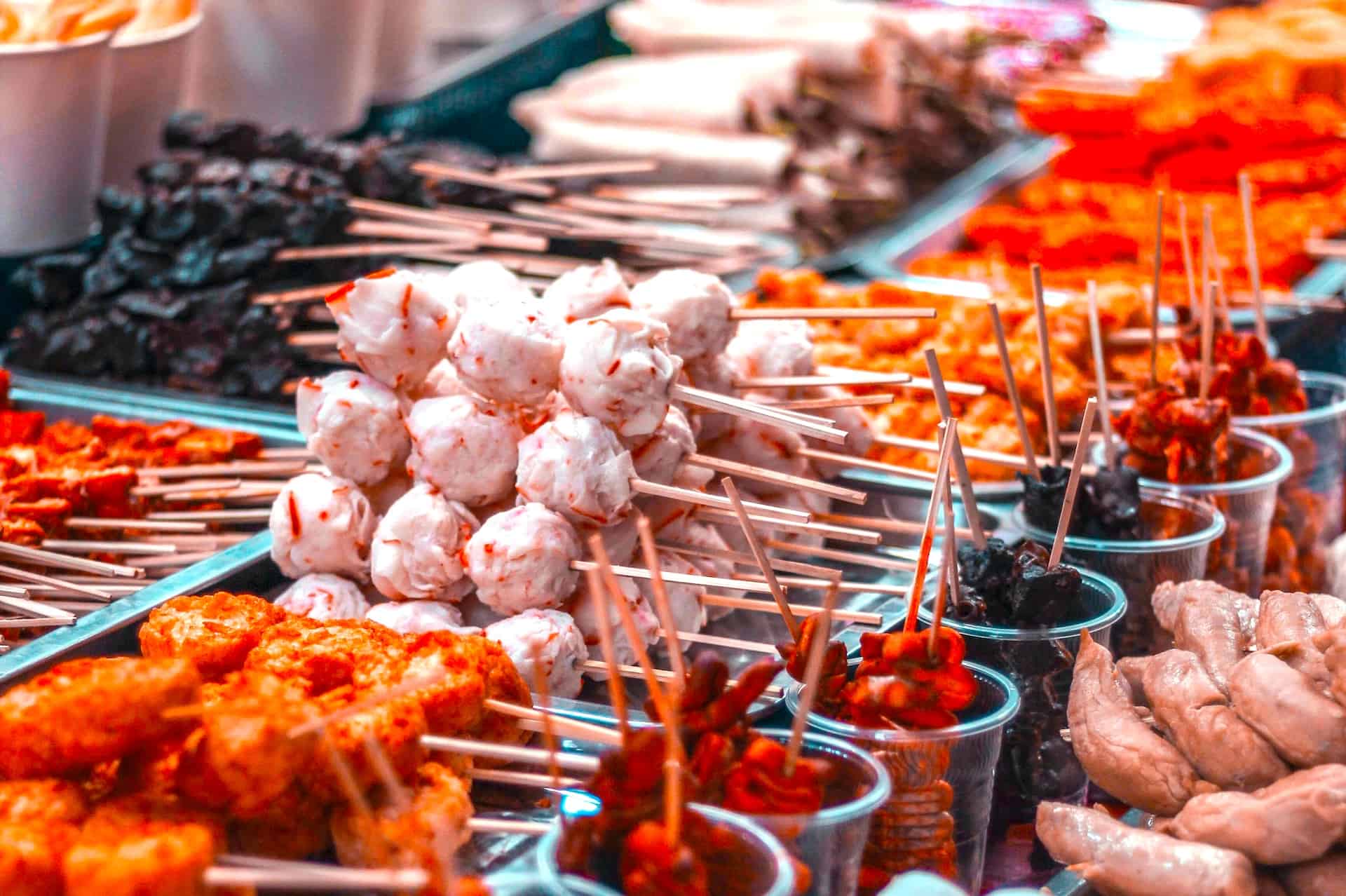
5. Economy and Commerce in Manila
Manila, the bustling capital of the Philippines, is not only the political and cultural heart of the nation but also a major economic powerhouse. This section explores the multifaceted economy of Manila, shedding light on its role as a commercial hub, the key industries driving its economic growth, and the city's significance in both the national and regional economic landscape.
A. Overview of Manila’s Economy
The economy of Manila is as diverse as its population. It is a dynamic mix of traditional markets and modern industries, reflecting the city's evolution from a colonial trading port to a contemporary urban metropolis. The city's economy is characterized by a vibrant service sector, robust commerce, burgeoning industries, and an ever-expanding infrastructure, all contributing to its status as one of the fastest-growing economies in Asia.
Manila's role as the chief port of the Philippines has been a significant factor in its economic development. The port facilities, including the Manila North Harbor and the Port Area, handle a substantial portion of the country's sea-borne trade, facilitating both domestic and international commerce. This has not only bolstered Manila's economy but also positioned it as a vital link in global trade routes.
B. Key Industries and Sectors
The economic landscape of Manila is marked by a variety of key sectors. Commerce is at the heart of the city's economy, with numerous markets, shopping centers, and commercial districts spread across the city. These commercial areas are not just places of trade but also cultural hotspots where the city's diversity and vibrancy are on full display.
Manufacturing is another important sector, with industries ranging from textiles to electronics contributing significantly to the city's economy. The industrial areas in and around Manila are hubs of production and innovation, employing thousands of citizens and contributing to the country's export economy.
The service sector, including finance, real estate, and business process outsourcing (BPO), is a major driver of Manila's economy. The city's status as a financial center is evidenced by the presence of major banks, financial institutions, and the Philippine Stock Exchange. The BPO industry, in particular, has seen remarkable growth, with Manila becoming one of the leading destinations for outsourcing services globally.
Tourism also plays a crucial role in Manila's economy. The city's rich history, cultural attractions, and modern amenities attract millions of tourists each year, contributing to the hospitality and service industries.
C. Infrastructure and Urban Development
Manila's infrastructure development has been key to supporting its economic growth. The city has seen significant investments in transportation, utilities, and communication networks, aimed at improving connectivity and facilitating business operations.
The development of modern infrastructure, such as highways, bridges, and mass transit systems, has helped ease traffic congestion, a perennial challenge in the city. These improvements have not only enhanced the quality of life for residents but also made the city more attractive to investors and businesses.
D. Challenges and Opportunities
While Manila's economy is robust, it is not without its challenges. Urbanization and population growth have led to issues like housing shortages, environmental degradation, and social inequality. The city government, in collaboration with various stakeholders, is working to address these challenges through sustainable development initiatives and inclusive economic policies.
There are also immense opportunities for growth and innovation in Manila's economy. The city's strategic location, young workforce, and growing middle class make it an attractive destination for foreign investment and new business ventures. The rise of digital technology and e-commerce presents new avenues for economic expansion, tapping into the city's entrepreneurial spirit.
E. Conclusion
Manila's economy is a testament to the city's resilience and dynamism. From its origins as a trading port to its current status as a modern economic hub, the city has continually adapted to changing times and emerging trends. The diverse sectors that drive Manila's economy - commerce, manufacturing, services, and tourism - reflect the city's multifaceted character.
As Manila continues to grow and evolve, it remains a key player in the national and regional economy, poised for further development and prosperity. The city's economic journey is intertwined with its rich cultural heritage, offering a unique blend of tradition and modernity that continues to attract people and businesses from around the world.
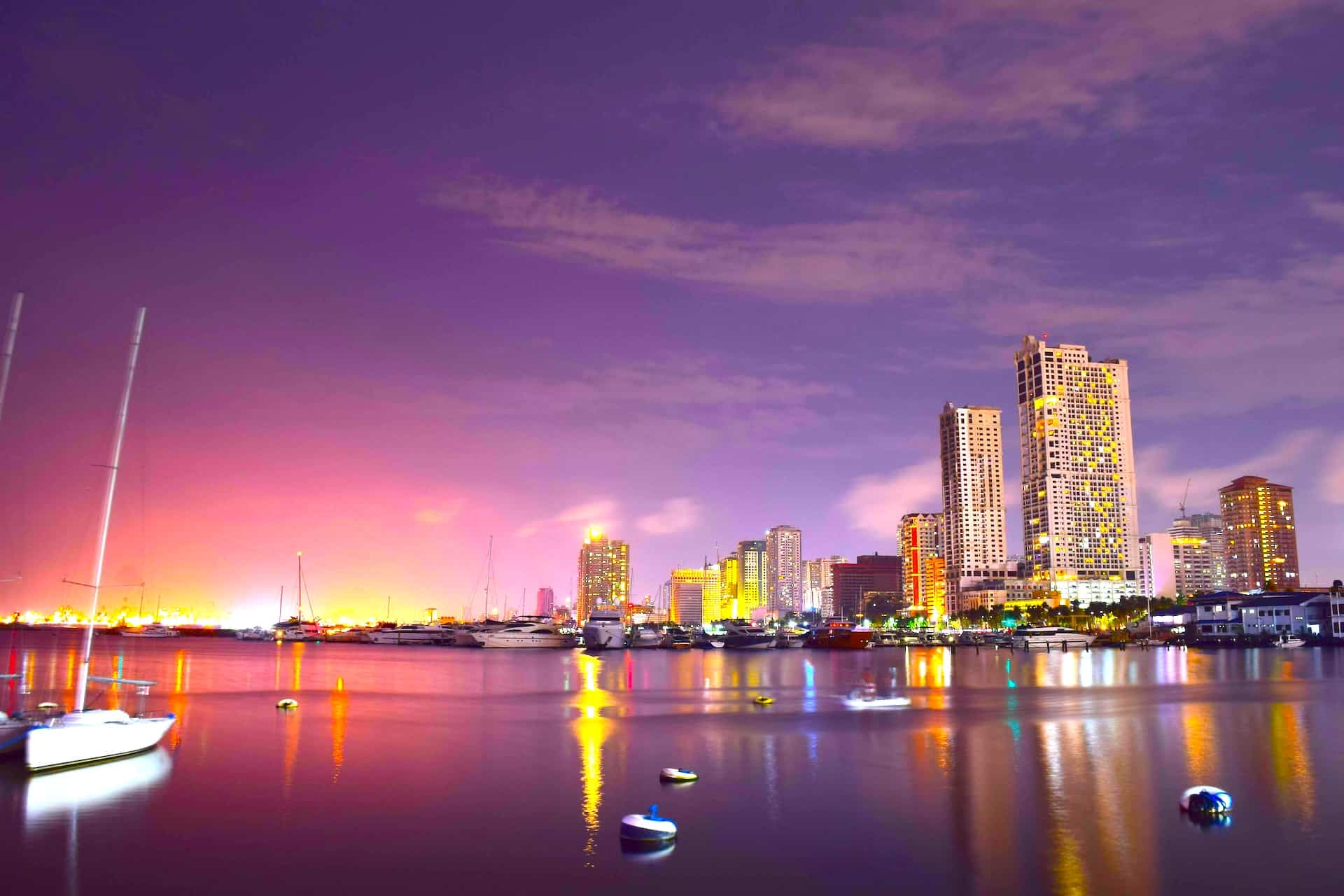
6. Culture and Heritage of Manila
Manila, the capital city of the Philippines, is a melting pot of cultures, an amalgam of history and modernity, a place where the past and present coexist in a vibrant tableau. This section delves into the rich cultural heritage of Manila, exploring its historical landmarks, diverse population, and the cultural influences that have shaped the city's unique identity.
A. Historical Landmarks and Their Significance
Manila's landscape is dotted with historical landmarks that tell the story of the city's past. From the remnants of the Spanish colonial era to the memorials of World War II, each landmark has a tale to tell.
One of the most iconic of these is Intramuros, the walled city founded by the Spanish in the late 16th century. Within its walls lie centuries-old churches, including the Manila Cathedral and San Agustin Church, which have withstood wars and natural disasters. These structures are not just mere relics; they are active places of worship that continue to play a significant role in the religious life of the city’s predominantly Catholic population.
Rizal Park, another significant landmark, is a tribute to the national hero Dr. Jose Rizal. The park, with its grand monuments and open spaces, is a focal point for both leisure and reflection, connecting the people with their history.
B. The Cultural Melting Pot
Manila's culture is a product of its history. The city has seen influences from the Malay, Chinese, Spanish, American, and other cultures, each leaving an indelible mark on its cultural landscape.
The Chinese influence, dating back to pre-colonial times, is evident in Binondo, the oldest Chinatown in the world. This district is not just a commercial center but also a living museum of Chinese-Filipino culture, with its ancient temples, unique cuisine, and vibrant festivals.
The Spanish colonial period introduced Christianity, which remains a dominant cultural force. This period also saw the emergence of distinct architectural styles, cuisine, and traditions, many of which have been preserved and continue to be celebrated.
C. Arts, Literature, and Entertainment
Manila’s arts and entertainment scene is as diverse as its population. The city is a hub for Filipino artists, musicians, and writers, who draw inspiration from their rich cultural heritage and contemporary experiences.
The city's galleries and theaters showcase a range of artistic expressions, from traditional art forms to modern and contemporary works. Manila's literature scene is also thriving, with a new generation of writers exploring themes that resonate with the city's past and present.
Cinema is another vital aspect of Manila's cultural landscape. Filipino films, known for their poignant storytelling and unique cinematic language, have gained international acclaim, highlighting the city's role in the global arts community.
D. Festivals and Cultural Events
Manila's calendar is replete with festivals and cultural events that celebrate its diverse heritage. These festivals are not just tourist attractions; they are expressions of the city’s identity and a way for its residents to connect with their roots.
One of the most celebrated events is the Feast of the Black Nazarene, a religious procession that attracts millions of devotees. Other festivals, like the Chinese New Year celebrations in Binondo, showcase the city's multicultural character.
E. Gastronomy: A Reflection of Manila's Cultural Diversity
Manila's culinary scene is a reflection of its cultural diversity. The city’s cuisine is a fusion of indigenous, Spanish, Chinese, and American influences, resulting in a unique gastronomic experience.
Local dishes like adobo, sinigang, and lechon are not just food; they are part of the city’s cultural fabric, offering insights into its history and the influences that have shaped it.
F. Conclusion
Manila’s culture and heritage are the soul of the city. Its historical landmarks, diverse population, and rich cultural tapestry tell the story of a city that has evolved while retaining its unique identity. From its churches and temples to its festivals and cuisine, Manila offers a kaleidoscope of experiences that reflect its past and present, making it a city like no other.
7. Education and Academia in Manila
Manila, with its rich history and vibrant culture, is not just the political and economic heart of the Philippines but also a center of education and learning. The city's educational landscape is as diverse and dynamic as Manila itself, boasting an array of institutions that cater to a wide spectrum of academic interests and pursuits. This section delves into the educational fabric of Manila, highlighting its universities, their historical significance, and the role they play in shaping the future of the nation.
A. The Academic Landscape of Manila
The city of Manila is home to a myriad of educational institutions, ranging from primary schools to some of the country's most prestigious universities. These institutions are not just centers of learning; they are crucibles where the future of the nation is molded. The educational environment in Manila is marked by a commitment to excellence, innovation, and social responsibility.
B. Historical Significance of Manila's Universities
Manila’s universities are steeped in history, with many of them having played pivotal roles in the country's past. These institutions have been witnesses to and participants in significant historical events, shaping not just the minds but also the very fabric of Filipino society.
Far Eastern University (FEU) in Manila, for instance, is an exemplary institution that mirrors the city's rich cultural heritage. Founded in 1928, FEU's Art Deco buildings have been declared as historical landmarks. The university has been a bastion of learning and freedom, producing graduates who have gone on to play significant roles in various sectors of society.
C. The Role of Universities in Manila’s Development
Manila’s universities do more than just impart education. They are active participants in the city and country's development, engaging in research and community outreach programs that address the city’s and the country's pressing issues. These institutions are not isolated ivory towers; they are integrated into the fabric of Manila, contributing to its growth and transformation.
Universities in Manila have also been at the forefront of cultural preservation and promotion. They host a variety of events, from art exhibits to literary festivals, showcasing the rich cultural heritage of the Philippines. These events are not just for the academic community but are open to the public, making the universities vital cultural hubs in the city.
D. Diversity and Inclusivity in Education
Manila's educational institutions are characterized by their diversity and inclusivity. The city's universities have a student population that comes from all corners of the Philippines and beyond, making them melting pots of different cultures and ideas. This diversity enriches the educational experience, preparing students to be global citizens in an increasingly interconnected world.
Inclusivity is also a key feature of Manila's educational landscape. Many universities offer scholarships and financial aid programs, ensuring that education is accessible to all, regardless of economic background. This commitment to inclusivity reflects the city's ethos of providing opportunities for all its citizens.
E. Challenges and Innovations in Education
The educational sector in Manila, like in any major city, faces its share of challenges. Urban issues such as congestion and pollution can impact the learning environment. However, Manila's educational institutions have been proactive in addressing these challenges, adopting innovative approaches to learning and teaching.
The integration of technology in education has been a significant development. Many universities in Manila have embraced digital tools and platforms, enhancing their teaching methodologies and expanding access to education. This shift towards digital education was particularly evident during the COVID-19 pandemic, where online classes and remote learning became the norm.
F. Conclusion
Education in Manila is a mirror of the city itself – diverse, dynamic, and forward-looking. The city's universities are not just centers of academic excellence but are institutions that reflect and contribute to the cultural, social, and economic fabric of Manila. They are places where the past and present converge, shaping the minds and futures of the next generation.
8. Infrastructure and Transportation in Manila
The infrastructure and transportation systems of Manila are the lifeblood of this bustling metropolis. As the capital city of the Philippines, Manila has undergone significant transformations in its infrastructure and transportation networks, catering to the needs of its ever-growing population and its status as a major economic and cultural hub. This section delves into the development, challenges, and innovations in Manila's infrastructure and transportation, painting a picture of a city constantly on the move and adapting to the demands of modern urban living.
A. The Evolution of Manila's Infrastructure
Manila's infrastructure has evolved dramatically over the years, reflecting the city's growth and the changing needs of its residents. From colonial roads to modern highways, the development of physical infrastructure in Manila has been key to supporting its burgeoning population and thriving economy.
The city's skyline, once dominated by low-rise buildings, now features an array of modern buildings that symbolize Manila's status as a rising global city. These modern buildings house offices, residential apartments, shopping malls, and cultural centers, serving as landmarks of Manila's rapid urban development.
The government buildings in Manila, from the historic City Hall to the sprawling government complexes, are not only centers of administration but also symbols of the city's political and historical significance. They reflect the city's journey from a colonial outpost to a modern capital.
B. The Transportation Network: Connecting the City
Transportation is a vital aspect of Manila's infrastructure, connecting the various parts of the city and facilitating the movement of people and goods. The city's transportation network is a complex system of roads, railways, waterways, and air travel, each playing a crucial role in the city's daily life.
Manila's road network is the most visible aspect of its transportation system. Major thoroughfares like EDSA (Epifanio de los Santos Avenue) and Roxas Boulevard are the main arteries, bustling with vehicles and serving as the primary routes for commuting within the city. However, traffic congestion remains a significant challenge, reflecting the city's struggle to keep up with the demands of its growing population.
The railway system, including the Light Rail Transit (LRT) and the Metro Rail Transit (MRT), provides an essential alternative to road travel, helping to alleviate traffic congestion. These rail systems are not just modes of transportation; they are lifelines for thousands of commuters who rely on them for their daily travel.
C. The Port of Manila: A Gateway to the World
The Port of Manila, comprising the Manila North Harbor, the Port Area, and other smaller ports, is a critical component of the city's infrastructure. As the chief port of the Philippines, it handles the bulk of the country's maritime trade, playing a pivotal role in the national economy.
The port is not just a commercial facility; it is a symbol of Manila's historical role as a trading hub and its continuing significance in global trade. The ongoing development and modernization of the port facilities are crucial to maintaining Manila's position as a major maritime player in the region.
D. Challenges and Innovations in Infrastructure and Transportation
Manila's infrastructure and transportation systems face numerous challenges, from congestion and pollution to the need for continuous upgrading and expansion. These challenges are compounded by the city's geographical constraints and the pressures of urbanization.
However, Manila has also been a site of innovation and adaptation. The city government and various stakeholders are continuously exploring new solutions to address these challenges. Initiatives like the expansion of the railway system, the development of integrated transport terminals, and the adoption of smart traffic management systems are steps towards a more efficient and sustainable urban transport system.
E. The Future of Manila's Infrastructure and Transportation
Looking towards the future, Manila's infrastructure and transportation systems are poised for further transformation. Plans for new infrastructure projects, including additional railway lines, highway expansions, and modern public transport facilities, are underway. These projects are part of a broader vision to create a more connected, accessible, and sustainable city.
The development of green spaces and pedestrian-friendly areas is also part of this vision, aiming to improve the quality of life in the city. The integration of environmental considerations into infrastructure planning reflects a growing awareness of the need for sustainable urban development.
F. Conclusion
The infrastructure and transportation systems of Manila are a testament to the city's dynamic nature and its ability to adapt to the needs of its people. From its historical roads to its modern railways and ports, Manila's infrastructure tells the story of a city that is continually evolving, striving to meet the challenges of the present while preparing for the future.
9. Social Issues and Challenges in Manila
Manila, a city characterized by its vibrant culture and dynamic economy, is also a place where various social issues and challenges converge. As the capital city of the Philippines, Manila faces a unique set of challenges that stem from urbanization, population density, and socio-economic disparities. This section explores these challenges, the impact they have on the city and its citizens, and the efforts being made to address them.
A. Urban Challenges and Housing
One of the most pressing issues in Manila is the challenge of urban housing. The city's rapid population growth has outpaced the development of adequate housing, leading to the proliferation of informal settlements. These communities, often lacking basic services and amenities, are a stark contrast to the modern buildings and commercial centers that symbolize Manila's economic progress.
The city government has initiated various housing projects and relocation programs in an effort to address this issue. However, the scale of the challenge requires a multi-faceted approach that involves not only providing housing but also ensuring access to employment, education, and healthcare for relocated communities.
B. Environmental Sustainability and Pollution
Environmental sustainability is another significant challenge for Manila. The city's rapid development has brought with it issues of air and water pollution, waste management, and the degradation of natural resources. Manila Bay, once a pristine natural harbor, now faces environmental challenges due to pollution and overdevelopment along its shores.
Efforts to clean and rehabilitate Manila Bay are ongoing, with government agencies, non-profit organizations, and community groups all playing a role. The challenge of environmental sustainability in Manila is not just about restoring natural resources but also about creating a sustainable urban environment that balances development with ecological preservation.
C. Social Inequality and Access to Services
Social inequality is a pervasive issue in Manila. The city is home to both affluent neighborhoods and impoverished communities, reflecting a wide disparity in wealth and access to services. This inequality impacts various aspects of life in the city, from education and healthcare to security and social mobility.
The city government, along with various non-governmental organizations, is working to address these disparities. Programs aimed at providing education, healthcare, and social services to underserved communities are critical to bridging the gap and building a more inclusive city.
D. Transportation and Traffic Congestion
Transportation is a major challenge in Manila, with traffic congestion being a daily reality for its residents. The city's infrastructure, despite improvements, struggles to keep up with the demands of its population. The congestion affects not just the ease of travel but also has economic and environmental implications.
Efforts to improve the city's transportation system include expanding public transport options, developing alternative modes of transportation like cycling and walking, and implementing traffic management solutions. These initiatives aim not just to ease congestion but to create a more sustainable and efficient transportation system for the city.
E. Public Health and Safety
Public health and safety are key concerns in Manila. The city faces various public health challenges, including communicable diseases, healthcare access, and environmental health issues. The COVID-19 pandemic has further highlighted the need for robust public health systems and preparedness in the city.
Safety and security are also paramount, with the city government, police and law enforcement agencies continuously working to address issues of crime and public safety. Community policing, public awareness campaigns, and social programs are part of a comprehensive approach to ensuring the safety and security of Manila's residents.
F. The Way Forward: Addressing Manila's Challenges
Addressing the social issues and challenges in Manila requires a collaborative and multi-disciplinary approach. It involves not just the government but also the participation of the private sector, civil society, and the city's residents. Building a sustainable, inclusive, and resilient Manila is a collective endeavor that demands innovation, compassion, and a deep understanding of the city's unique dynamics.
The path forward is paved with challenges, but also with opportunities for positive change. Through concerted efforts and shared vision, Manila can continue to evolve as a city that not only thrives economically but also cares for the well-being of all its citizens.
G. Conclusion
The social issues and challenges in Manila are as complex as the city itself. From housing and environmental sustainability to social inequality and transportation, each challenge presents an opportunity to build a better, more inclusive city. As Manila continues to grow and develop, the way these challenges are addressed will shape the future of the city and its people.
10. Manila in Popular Culture
Manila, a city with a rich tapestry of history, culture, and urban dynamism, has long been a muse for artists, writers, and filmmakers. Its unique character, with a blend of the traditional and the modern, has been captured and portrayed in various forms of popular culture. This section explores how Manila is represented in arts, media, and literature, highlighting the city's influence on and contribution to popular culture both locally and internationally.
A. Manila through the Lens of Cinema
The film industry in Manila has been a significant contributor to the city's cultural landscape. Filipino cinema, with its deep roots in Manila's history and society, offers a window into the city's soul. The streets, neighborhoods, and people of Manila have been the backdrop for countless films, telling stories that range from the struggles of everyday life to the complexities of love, family, and identity.
Manila's cinema has not shied away from depicting the city's social issues, often presenting a raw and unfiltered view of urban life. These films have played a crucial role in bringing Manila's stories to a broader audience, showcasing the city's diversity and resilience.
B. Literary Depictions of Manila
Literature has been another medium through which the essence of Manila has been captured and conveyed. The city has been a setting for novels, poems, and stories that delve into its history, its people, and its ever-evolving identity. Filipino writers, both past and present, have used the backdrop of Manila to explore themes of colonialism, social change, and personal transformation.
The literary portrayal of Manila offers insights into the city's multifaceted character. From the historic streets and houses of Intramuros to the bustling life of modern districts, the city's landscape provides a rich canvas for storytelling.
C. Manila in Music and Performing Arts
Manila's influence extends to music and the performing arts, where the city's rhythm and energy are echoed in songs and performances. The music scene in Manila is a vibrant mix of traditional Filipino styles and contemporary genres, reflecting the city's diverse cultural influences.
The performing arts, including theater and dance, have also been platforms for expressing Manila's stories and experiences. The city's theaters have hosted a wide array of productions, from local plays and musicals to international shows, all contributing to Manila's cultural vibrancy.
D. The City's Influence on Visual Arts
The visual arts scene in Manila is a testament to the city's creative spirit. Galleries and art spaces across the city showcase works by Filipino artists, ranging from traditional art forms to contemporary and experimental works. These artworks often reflect the city's landscape, its people, and the social and political issues that shape their lives.
Manila's street art is another expression of the city's influence on visual arts. Murals and graffiti throughout the city not only beautify urban spaces but also serve as a medium for artists to express their views on societal issues, making art accessible to the wider public.
E. Manila in the Digital Age: Social Media and Online Representations
In the digital age, Manila's presence in popular culture has expanded to the online realm. Social media platforms, blogs, and digital content have become new avenues for portraying and discussing the city. These digital spaces offer diverse perspectives on Manila, from travel blogs highlighting its tourist spots to online forums discussing its urban challenges.
F. Conclusion
Manila's representation in popular culture is as multifaceted as the city itself. Through cinema, literature, music, the arts, and digital media, the city's stories are told and retold, shaping perceptions of Manila both within the Philippines and around the world. These cultural expressions not only entertain but also inform, challenge, and inspire, contributing to a deeper understanding of this dynamic city.
11. Gastronomy of Manila: A Culinary Journey
Manila, a city known for its rich history and cultural diversity, also boasts a vibrant culinary scene that is as diverse and colorful as the city itself. This section explores the gastronomy of Manila, delving into the flavors, dishes, and culinary influences that make the city a paradise for food enthusiasts. From traditional Filipino cuisine to the fusion of global flavors, Manila's gastronomy is a reflection of its history, its people, and their way of life.
A. The Rich Tapestry of Manila's Cuisine
The cuisine of Manila is a gastronomic reflection of its cultural melting pot. Influences from Malay, Chinese, Spanish, and American cultures have intertwined with local Filipino culinary traditions to create a unique and diverse food landscape. This blend of flavors is evident in the city’s street food, local eateries, and fine dining restaurants, offering a culinary experience that is both rich in history and modern innovation.
B. Traditional Filipino Dishes and Local Delicacies
At the heart of Manila's cuisine are traditional Filipino dishes that have been passed down through generations. Adobo, a dish made with meat marinated and cooked in vinegar, soy sauce, and garlic, is a quintessential Filipino dish that varies in preparation from one household to another, each with its unique twist.
Sinigang, a sour soup flavored with tamarind, and Lechon, a whole roasted pig, are other staples of Filipino cuisine that are widely popular in Manila. These dishes are not just food; they are a part of Manila’s cultural heritage, representing the city's history and the diversity of its people.
C. Street Food: The Flavor of Manila's Streets
The street food scene in Manila is a vibrant and integral part of the city's gastronomy. The streets are lined with vendors offering a variety of snacks and delicacies, from savory bites like Isaw (grilled chicken intestines) and Balut (fertilized duck egg) to sweet treats like Halo-halo (a mixed dessert with shaved ice, milk, and various ingredients). These street foods offer a taste of Manila's authentic flavors and are a testament to the city's dynamic and accessible culinary culture.
D. Fusion Cuisine and Global Influences
Manila's culinary scene is not limited to traditional Filipino dishes. The city's history of colonization and its role as a global city have brought a variety of international cuisines to its shores. Restaurants offering Chinese, Spanish, Japanese, and American cuisines, among others, are common, reflecting the city’s openness to global culinary influences.
Fusion cuisine, which combines elements of different culinary traditions, is also gaining popularity in Manila. Chefs and restaurateurs are experimenting with blending Filipino flavors with international techniques and ingredients, creating innovative dishes that are both familiar and new.
E. The Role of Food in Manila's Social and Cultural Life
In Manila, food is more than just sustenance; it plays a significant role in social and cultural life. Meals are a time for family and friends to gather, share stories, and build relationships. Festivals and celebrations in Manila are often centered around food, with special dishes prepared for occasions like fiestas, birthdays, and religious holidays.
The city's food culture is also a reflection of its social diversity. From upscale dining establishments to humble street-side eateries, Manila's gastronomy caters to all, regardless of social and economic status.
F. Challenges and Sustainability in Manila's Food Industry
As Manila continues to grow and evolve, its food industry faces challenges related to sustainability and environmental impact. Issues like food waste, sourcing of ingredients, and the ecological footprint of food production are increasingly coming to the forefront.
Restaurants, food producers, and consumers in Manila are becoming more conscious of these challenges, with a growing trend towards sustainable and locally-sourced food. Urban farming initiatives, organic markets, and farm-to-table restaurants are part of this movement towards a more sustainable food industry in the city.
G. Conclusion
The gastronomy of Manila is a journey through the city's history, culture, and soul. It offers a window into the lives of its people, reflecting their traditions, influences, and aspirations. From the bustling street food stalls to the fine dining establishments, Manila's culinary scene is a testament to the city's diversity, creativity, and vibrancy.
12. Infrastructure and Transportation in Manila: Navigating Urban Mobility
Manila, a city that pulsates with life and activity, faces the colossal task of managing its infrastructure and transportation needs. As the capital of the Philippines, Manila's urban landscape is a complex web of streets, railways, waterways, and air routes, each playing a critical role in the daily lives of its millions of residents. This section explores the intricacies of Manila's infrastructure and transportation system, delving into the challenges, innovations, and future plans that shape the mobility and connectivity of this bustling metropolis.
A. The Backbone of Manila's Infrastructure
Manila's infrastructure is the foundation upon which the city functions. Over the years, significant investments have been made to develop and modernize various aspects of the city's physical framework. This includes the construction of modern buildings that serve as commercial, residential, and cultural spaces, and the development of critical facilities like hospitals, schools, and government buildings.
The city's infrastructure development reflects its growth trajectory, from a historic colonial town to a modern urban center. This transformation is evident in the skyline of Manila, where contemporary high-rises stand alongside historic structures, symbolizing the city's journey through time.
B. The Challenge of Urban Transportation
Transportation is one of the most pressing challenges in Manila. With a population that far exceeds the capacity of its existing infrastructure, the city grapples with issues of traffic congestion, pollution, and inefficiency in public transport.
The road network, despite being extensive, struggles under the weight of daily traffic. Major thoroughfares such as EDSA and Roxas Boulevard are often clogged with vehicles, leading to long hours of traffic jams. The congestion not only affects the quality of life of commuters but also has broader economic and environmental implications.
C. Public Transport System: Lifeline of the City
The public transport system in Manila is a lifeline for many of its residents. The city's network of buses, jeepneys, and tricycles is complemented by more formal modes of transportation such as the Light Rail Transit (LRT) and the Metro Rail Transit (MRT). These rail systems, despite their challenges, play a crucial role in providing mobility to thousands of commuters daily.
The government has been working on expanding and upgrading the public transport system, with new lines being added to the LRT and MRT networks and improvements being made in bus and jeepney services. These efforts aim to provide more efficient, reliable, and accessible transportation options for the residents of Manila.
D. The Port of Manila: A Gateway for Commerce
The Port of Manila is a vital component of the city's infrastructure, serving as the primary maritime gateway for the Philippines. Comprising the Manila North Harbor, the Port Area, and other smaller ports, it handles a significant portion of the country's sea-borne trade.
The port's role extends beyond commerce; it is a symbol of Manila's historical significance as a trading hub and its current status as a major player in global maritime trade. Continuous efforts are made to modernize the port facilities, enhancing its capacity and efficiency to meet the growing demands of international trade.
E. Innovations and Future Directions in Transportation
Facing the challenges of urban transportation, Manila is looking towards innovative solutions and future projects to improve its transport landscape. Plans for new infrastructure projects, such as additional railway lines and the development of integrated transport hubs, are underway.
The city is also exploring the use of smart technology in traffic management and the promotion of alternative modes of transportation like cycling and walking. These initiatives are part of a broader vision to create a more sustainable, efficient, and people-friendly transportation system in Manila.
F. Conclusion
The infrastructure and transportation network of Manila is a testament to the city's efforts to keep pace with the demands of its growing population and evolving urban landscape. While challenges remain, the ongoing developments and future plans offer hope for a more connected and accessible Manila.
The city's journey towards improving its infrastructure and transportation system is not just about physical development but also about enhancing the quality of life for its residents and ensuring the sustainable growth of the metropolis.

